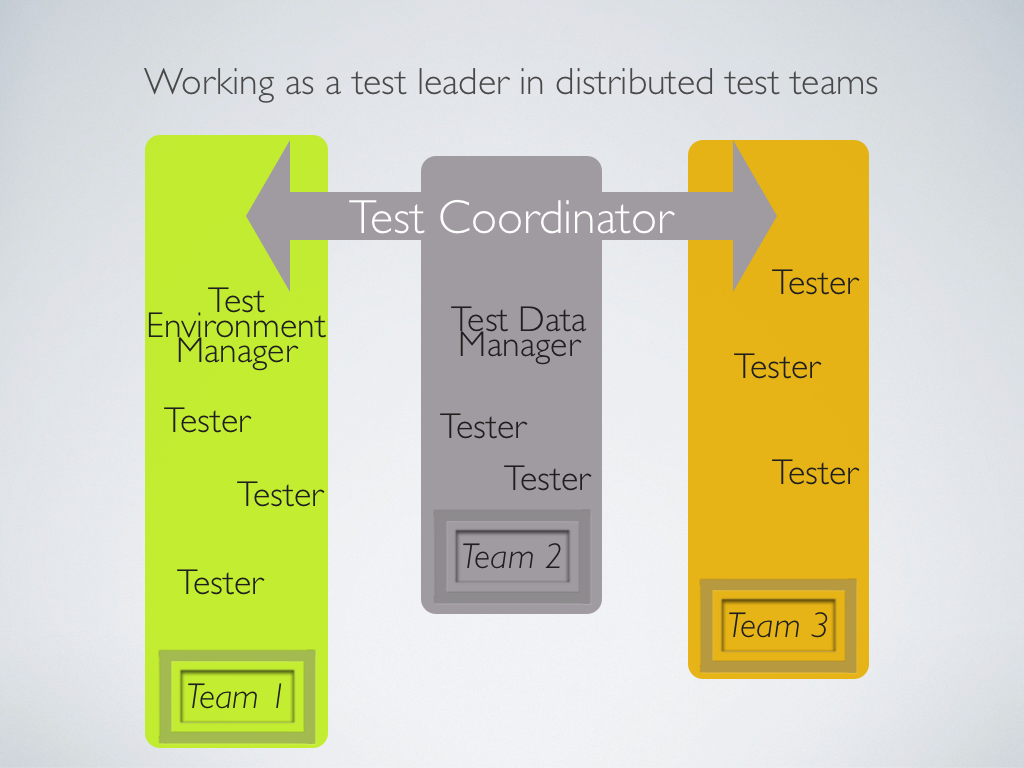May 2, 2012
Working as a Test Leader in Distributed Test Teams
The better and faster our communication technology gets, the more common it becomes to have geographically distant and disparate teams, each working on different aspects of a project. This arrangement is no novelty to software testing either, however be aware of the challenges of working as a test manager with geographically distributed teams. In this article you will learn about some of these common challenges and what you can do about them.
Testing is often performed distributed
Today, testing can take place anywhere, from different parts of the country or just across the street. The customer may exist in one place and the supplier elsewhere, perhaps even in another country. Even acceptance tests might be performed by testers who are in different locations. Convenient as it is, this reality is not without its problems.
Some of the problems of distributed projects may include:
- Communication
- Roles
- Risk of duplication
- Difficulty in creating team spirit
- Agreeing on team resources
- Communications
When testing is spread out in location, communication becomes difficult. It is important that communication is clear, honest, consistent and that everyone gets the same picture.
Using different tools does make the communication better. Tools can include Skype or MSN for general communication or a tool like ReQtest which facilitates online collaboration specifically for the areas of requirements management and testing.
Roles
In distributed teams, more people want to make decisions. It is very important to define what roles should exist in which locations. This increases the clarity and scope of the team overall, as it gives team members a sense of structure, regardless where they are located.
Typical roles that will need to be defined are the test manager, testers, test environment manager and test data manager, although of course these differ according to the size and scope of the project.
Duplication of roles
If the same task is to be performed in more than one location, there is a risk of duplication, which could delay the project.
Give one person in each location the role of test manager and ensure that they understand the risk of duplication and are prepared and able to avoid this pitfall. Provide clear responsibilities and think about the importance of good communication.

Team spirit
To create a stronger team spirit, it is important to get to know your team members, whether they’re in the same place or located elsewhere. Camaraderie doesn’t just happen, it needs to be fostered and grown with trust and by time.
It is important to get the team to work in the same direction. Trust is based on the participants having a common understanding of each other as well as the big picture of the project.
Write a contract about team resources
If testers are borrowed from other activities, there will be a risk that they have conflicting priorities, maybe even inherited from their leaders or their usual activities.
An example of this is acceptance testers who in actual fact really belong to the line operations team. If they still need to perform their regular duties while they do tests, the tests are likely to suffer.
One practical idea is to sign a formal contract with the managers who lend resources to your team. In the contract you should describe the extent to which the person is needed for the tests. This will help set both the managers’ and the team members’ mind at rest, knowing that both you and their own manager have signed off approval on the ‘extra’ work they will be doing.
Summary
Having a geographically distributed team involves a number of challenges to be addressed for the work to function as effectively as possible. Some of the problems include communication, clarity of roles, duplication of roles, camaraderie and disagreements when it comes to team resources.
Share article